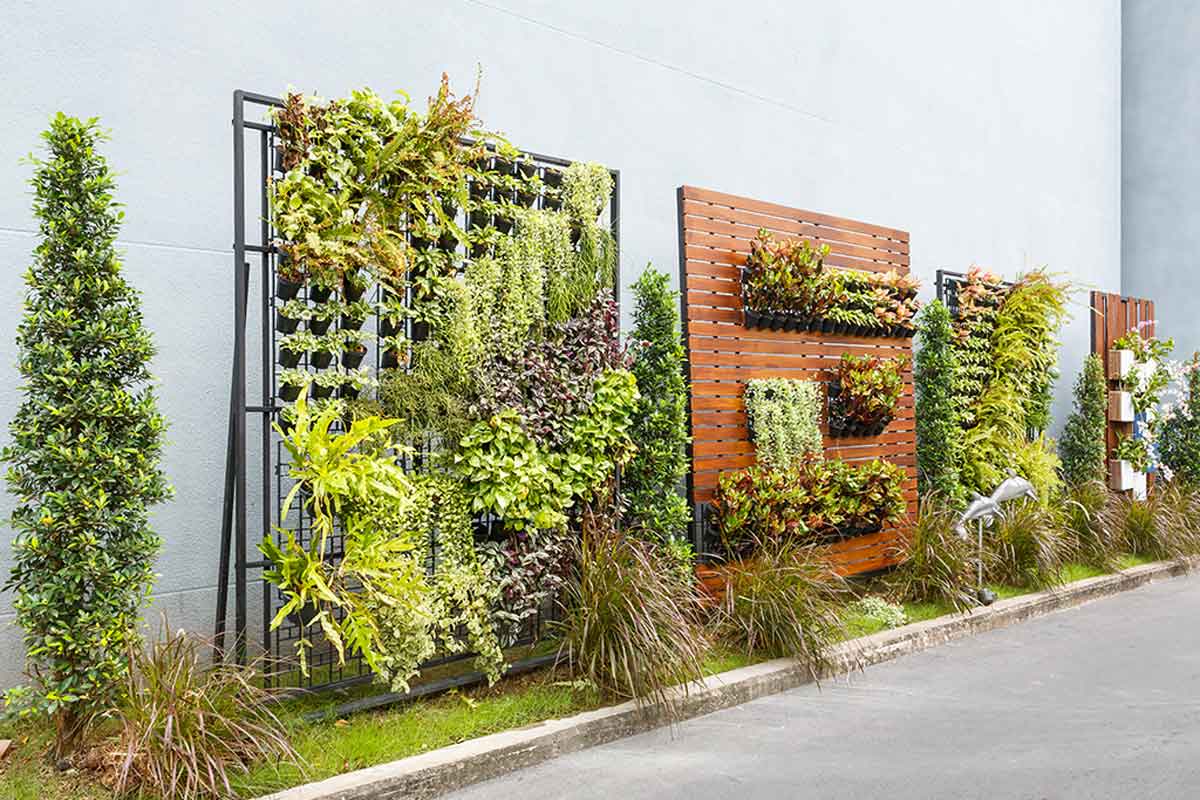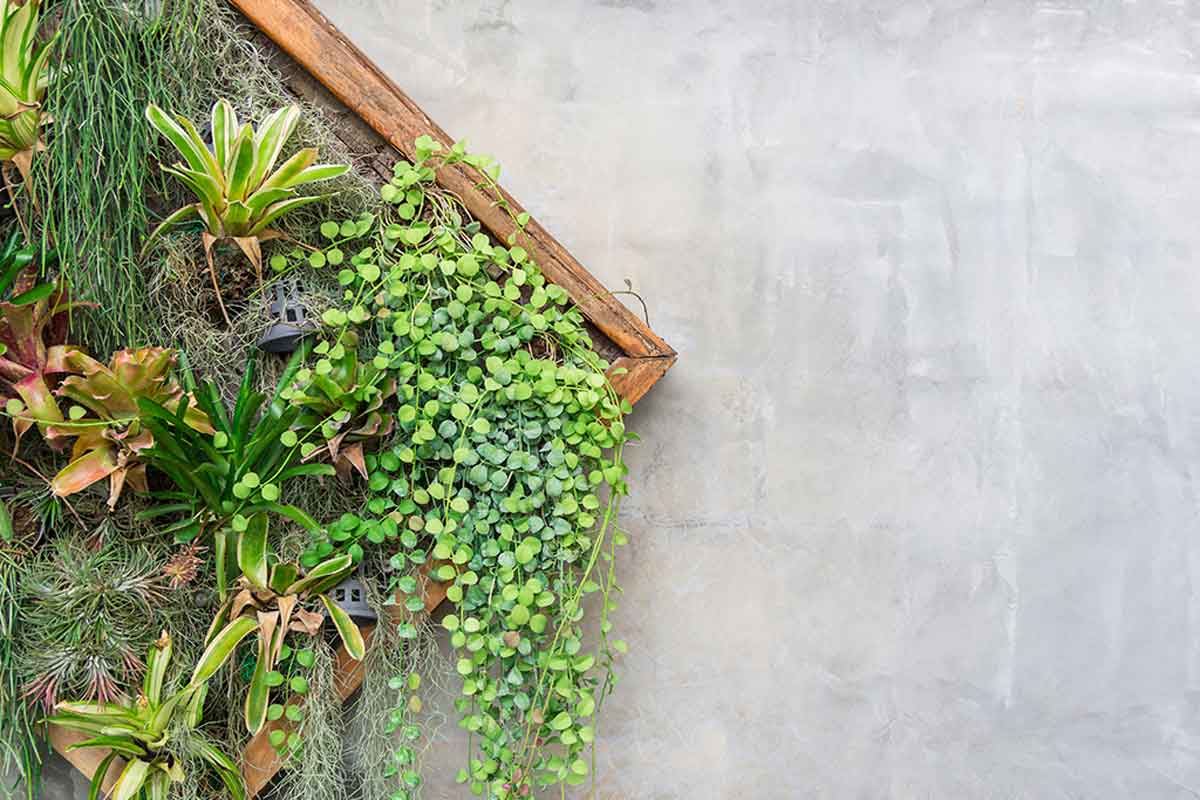Vertical Gardens: Solve your Doubts

It’s impossible not to fall in love with vertical gardens! However, although they’re beautiful, they do generate many doubts about their construction and care. Precisely for this reason, we’ll touch on some of these issues and clear up any questions.
When you’ve finished reading this article, you’ll understand that vertical gardens are simpler than they seem and add invaluable decorative value to your spaces. Of course, the place where you decide to have yours must have good lighting and the right conditions, depending on the type of plants you choose.
That’s the best thing about vertical gardens! These plantations will be in accordance with your tastes and with the resources that are available to you. Keep reading because we’re going to give you some useful tips to create your own.
What are vertical gardens?

As its name indicates, a vertical garden involves planting different types of plants on a vertical surface, either indoors or outdoors. Its objective is to optimize the available space in a garden and it’s a great option for people who love nature but lack the space to have plants.
They’re so versatile that they can even be installed indoors in city apartments, specifically on the walls of the living room. They’ve become so popular that many social settings and commercial areas such as malls have this type of decorative garden.
Why have one at home?
Vertical gardens offer a much more natural and sophisticated decorative alternative. Also, depending on the plant species, you’ll enjoy cleaner air because they provide extra oxygen. Thanks to these natural benefits, you’ll also have cooler rooms, ideal when we’re talking about hot and humid cities.
According to experts, all gardens have very positive effects on our health. For this reason, you’ll find gardens inside and outside of hospitals because the sight of flowers and plants invigorates patients. This means that, by having a garden at home, even if it’s vertical, you’ll obtain benefits for your physical and mental health.
What are the recommended plants?
The number and types of plants to grow in vertical gardens are wide and varied. It’s ideal to opt for those that help purify the air such as lilies, pothos, and ferns.
If, in addition to loving gardening, you also like home cooking, plant some aromatic plants that’ll be useful in your preparations. Among them, are mint, basil, thyme, and oregano.
However, as a general recommendation, it’s necessary to know all the characteristics of the desired species, as well as their needs regarding irrigation, growth, and fertilizer, among others. This is important due to the position of your garden and since it’s vertical, plants that need constant watering aren’t suitable. Unless you have the option of installing an automatic watering system.
Can I create a vertical garden myself?

Some people wonder if they can create a vertical garden on their own at home. The answer is yes, this is a project that looks complicated but is in fact, easily done.
Doing it yourself can be much cheaper than hiring a specialist to do it for you. So if you have clear notions of gardening, take advantage of them. Look for some illustrative videos on the internet to guide you.
How difficult is it to maintain vertical gardens?
Maintaining vertical gardens depends on the layout, plants, and appearance they have. If you want the plants to be neat, then they’ll need pruning regularly and you must be consistent with this task. By having different species on your green wall, it may be the case that some will stand out more than others. In that case, it’s necessary to maintain harmony in terms of plant size and length.
On the other hand, some plants require more care than others, so this is something to consider when making the choice. The ideal solution is to opt for low-maintenance plants and have a tidier garden for longer, without the need to invest more time than desired.
The irrigation system is important to maintain the health of your plant wall too, so make sure you provide them with this resource. Some people opt for a hydroponic system to provide water constantly. Of course, it must be said that this process is quite expensive.
As for pests, there’s less risk of infestation because they usually come from the ground.
How much do vertical gardens cost?
The cost of creating and maintaining this type of garden depends on the size of the wall, whether you hire a professional or do it yourself. Equally, the origin and type of plant species and the irrigation system you prefer also play a part in the cost. Options range from very cheap to very expensive.
So, if for a long time you’ve wanted to have a wall of greenery in your home, the time has come to make it a reality! You can start by conditioning a small space and as you practice and learn more about its care, expand it.
Either way, just enjoy bringing nature into your home!
All cited sources were thoroughly reviewed by our team to ensure their quality, reliability, currency, and validity. The bibliography of this article was considered reliable and of academic or scientific accuracy.
- Cinzia Mulé. Jardínea Terapéuticos. Consensus 20 (2) 2015.